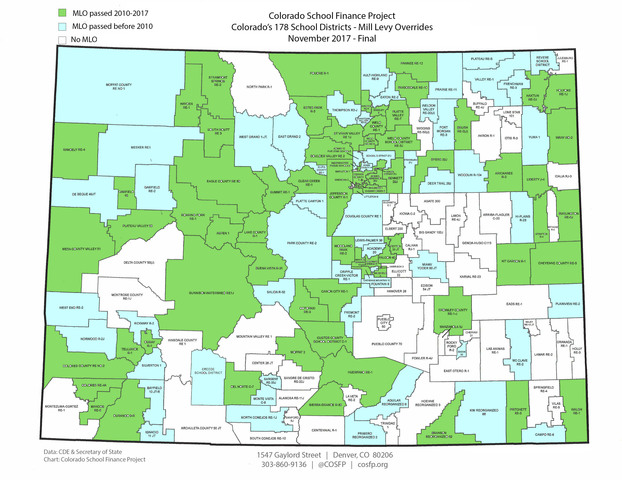DENVER -- What does local control over school funding in Colorado look like?
Tracie Rainey with the nonprofit, nonpartisan Colorado School Finance Report said it all depends on where people live.
"You're ZIP code is really determining the quality of education that you're getting," she said. "You are not creating equal playing fields."
Rainey put together this map that illustrates the vast inequities in school funding in Colorado.

The school districts highlighted in green on the map represent communities where voters have recently passed mill levy overrides through an increase in local property taxes. Local districts can use this revenue to pay teachers more, buy textbooks or new technology. Communities like Jefferson County, Boulder and Cherry Creek are on this list.
The counties in light blue on the map represent districts who haven't approved a local tax increase or mill levy override for schools since before the 2009 recession. Districts like Douglas County, Brighton and Adams 12 Five Star.
Brighton -- or school district 27J -- has asked voters six times since 2003 for a mill levy override and each time they've failed. A decision that had significant impacts on the district this year.
"[We] made the move recently to a four-day school week, which we know will have implications for students and their families," said Leslie Colwell with the nonprofit Colorado Children's Campaign.
Colwell said the lack of a state-wide solution has led to the patchwork of school funding in Colorado.
"What we have is 178 local solutions," said Colwell.
Back to the map from the Colorado School Finance Report, the districts in white represent 70 Colorado school districts who have never passed a local mill levy increase - and that doesn't mean they haven't tried.
"School funding doesn't work very well right now," said Rainey. "It's taken 25 years to mess up and it's going to take some time to solve it in a thoughtful way."
"The question we have to ask ourselves, is that the path of inequality that we want Colorado to stay on?" said Rainey.


